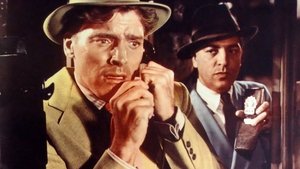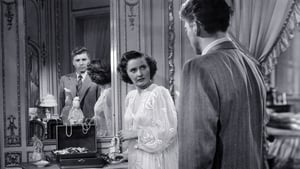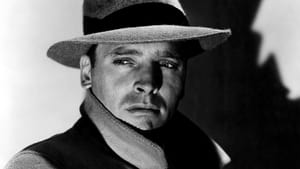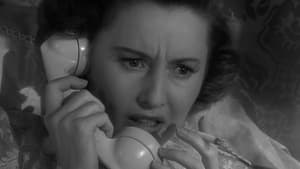Contact: [email protected]
Video Sources 0 Views
- Watch trailer

Synopsis
[ez-toc]




Introduction
In the ever-evolving landscape of cinema, the intersection of old films and modern technology has given rise to a unique phenomenon – colorized movies. This practice, while often met with controversy, opens new avenues for preserving and reinvigorating classic films. Film restoration plays a pivotal role in maintaining the beauty and quality of old films, ensuring that they continue to captivate audiences across generations. As a film reviewer and editor, it is essential to delve into the nuances of this transformative process, especially when it comes to timeless classics like ‘Sorry, Wrong Number Colorized.’
Read Media File Transfer Agreement: Terms and Conditions
Read FAQ
Understanding ‘Sorry Wrong Number Colorized’ and Its Original Black and White Release
Anatole Litvak’s directorial vision, coupled with Lucille Fletcher’s masterful writing style, brought ‘Sorry Wrong Number Colorized’ to life in 1948. Adapted from Fletcher’s gripping radio play, the film starred the dynamic duo of Barbara Stanwyck as the bedridden Leona and Burt Lancaster as the mysterious Henry. The black and white release of the film received critical acclaim, establishing it as a quintessential piece of film noir.
1.1 The Directorial Vision of Anatole Litvak
Litvak’s prowess in creating a tense and atmospheric narrative set the stage for ‘Sorry Wrong Number Colorized’ to become a classic. His understanding of film noir aesthetics and the ability to translate them onto the screen added depth to the story’s psychological elements.
1.2 Adapting from Stage to Screen: Lucille Fletcher’s Masterful Writing Style
Lucille Fletcher’s transition from radio play to screenplay was seamless, capturing the essence of the suspenseful plot while introducing visual elements that heightened the cinematic experience.
1.3 Stellar Performances: Barbara Stanwyck as Leona and Burt Lancaster as Henry
Stanwyck’s portrayal of the bedridden and anxious Leona was nothing short of remarkable, earning her acclaim and even an Academy Award nomination. Lancaster’s enigmatic performance as Henry added layers to the film’s intrigue.
The Colorized Adaptation: A Controversial Yet Artistic Achievement
The decision to create a colorized version of ‘Sorry Wrong Number Colorized’ sparked debates within the film community. The colorization process, often criticized for compromising the authenticity of the original artistic intent, was approached with caution.
2.1 Overview of the Colorization Process Employed for the Film’s Revival
The colorization techniques employed aimed at breathing new life into the classic, showcasing advancements in technology while respecting the film’s noir origins.
2.2 Debate Between Preserving the Original Artistic Intent and Introducing New Visual Elements Through Colorization
The tension between preserving the original black and white aesthetic and introducing a vibrant color palette raised questions about the integrity of the film’s visual identity.
Examining the Use of Color to Enhance Mood and Atmosphere in ‘Sorry Wrong Number Colorized’
Against the backdrop of film noir aesthetics, the color palette chosen for the adaptation played a crucial role in enhancing the mood and atmosphere of ‘Sorry Wrong Number.’
2.3 Analysis of How the Chosen Color Palette Complements the Film’s Noir Aesthetics
The careful selection of colors to maintain the noir atmosphere while adding a layer of visual richness demonstrates the potential of colorization to enhance the film’s emotional impact.
Addressing Concerns of Inauthenticity: Maintaining the Integrity of the Storytelling Through Color Choices
Colorization, when done thoughtfully, can preserve the intended meaning and emotional impact of the original narrative.
2.4 Exploring How Colorization Can Still Stay True to the Story’s Intended Meaning and Emotional Impact
By understanding the psychology of characters and narrative emphasis, color choices can be tailored to complement the storytelling rather than detract from it.
The Reimagined Viewing Experience: Watching ‘Sorry Wrong Number Colorized’ in Color
The colorized version of ‘Sorry Wrong Number’ offers a reimagined viewing experience, intensifying the thriller elements that made the original a classic.
3.1 Examining How the Thriller Elements Are Intensified by the Presence of Color in Key Scenes
Crucial scenes gain a new layer of suspense and tension through the use of color, creating a viewing experience that resonates with contemporary audiences.
3.2 Analysis of the Continuing Relevance of the Murder Plot and Its Exploration of Guilt and Paranoia
The timeless exploration of guilt and paranoia in the film’s murder plot remains relevant, showcasing the enduring nature of its narrative.
3.3 The Enduring Symbolism Behind the Recurring Motif of the Telephone in the Film
The telephone motif, a recurring symbol in ‘Sorry Wrong Number Colorized,’ maintains its significance in the colorized version, serving as a visual anchor in the narrative.
The Enduring Legacy: From Radio Play to Colorized Screenplay
Barbara Stanwyck’s outstanding performance not only earned her recognition but also influenced future adaptations and productions of ‘Sorry Wrong Number Colorized.’ The film’s origins as a radio program also contributed to its unique audio-visual storytelling techniques.
4.1 Recognition for Barbara Stanwyck’s Outstanding Performance and Its Influence on Future Adaptations or Productions of ‘Sorry Wrong Number Colorized’
Stanwyck’s portrayal left an indelible mark on the film, influencing how subsequent adaptations approached the character of Leona.
4.2 Discussion on the Radio Program Origins and Its Impact on the Film’s Audio-Visual Storytelling Techniques
The film’s roots in radio storytelling added a layer of suspense and drama that became a hallmark of ‘Sorry Wrong Number Colorized.’
The Critical Divide: Revisiting Reviews of the Colorized Classic
As with any controversial adaptation, the colorized version of ‘Sorry Wrong Number Colorized ‘ sparked diverse opinions among film critics, both contemporary and retrospective.
5.1 Exploration of Both Contemporary and Retrospective Reviews on the Colorized Version
Examining how the film was received upon its colorized release and how those opinions have evolved over time provides insight into the dynamic nature of film criticism.
Conclusion
In conclusion, the colorized version of ‘Sorry, Wrong Number’ stands as a testament to the evolving relationship between technology and classic cinema. While the debate over colorization continues, this adaptation succeeds in preserving the essence of the original while offering a fresh perspective for a new generation of viewers. The significance lies not only in the visual transformation but in the ability of colorization to breathe new life into a film noir classic, ensuring its enduring legacy in the ever-expanding realm of cinema. As we navigate the delicate balance between preserving the past and embracing the future, the colorized ‘Sorry, Wrong Number’ exemplifies the artistry in revitalizing old films for contemporary audiences, forging a bridge between the golden age of cinema and the innovations of today.















